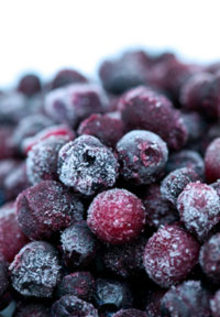Occasionally, frozen foods are partially or completely thawed because of delays in getting them into the freezer, a power outage or a change of plans for cooking the food.
When is it safe to refreeze food?
You can safely refreeze frozen food that has thawed—raw or cooked, although there may be a loss of quality due to the moisture lost through thawing. To safely refreeze, the thawed product must have been kept cold at 40 degrees or below for no more than 3-4 days. If food is completely thawed, warmed to room temperature or left out of the refrigerator for more than 2 hours, throw the food out for safety's sake. These principles apply to meat, poultry, shellfish, some vegetables and cooked foods.
Many vegetables are safe to refreeze. However, they lose much of their texture, flavor and appearance even if ice crystals are present in the package. You may want to cook the thawed vegetables and eat them right away, or add to soup or stew and freeze the soup to eat later.
Thawed fruit and fruit juice concentrates can be refrozen if they taste and smell good. Since thawed fruits suffer in appearance, flavor and texture from refreezing, you may want to make them into jam instead.
You can safely refreeze breads, cookies and similar bakery items. However, the end product is likely to be a drier, lower quality product.
When is it not safe to refreeze food?
If food is completely thawed, warmed to room temperature or left out of the refrigerator for more than 2 hours, throw the food out for safety's sake. These principles apply to meat, poultry, shellfish, some vegetables and cooked foods.
Do not refreeze ice cream and similar frozen desserts.
You can cook and eat thawed but still cold food mixtures like casseroles, pot pies, frozen dinners or pizzas but do not refreeze them.
Learn how to keep food safe during a power outage.
How do I refreeze food?
Put the food in the coldest part of the freezer, mark it with the date and use it within 2 to 3 months.
If the entire freezer has partially thawed, it may be necessary to ask friends or neighbors to refreeze some food packages for you. A freezer can only refreeze a small amount of food at a time. Refreezing smaller amounts of food ensures that the food refroze safely and with the smallest amount of added ice crystals forming.
In making decisions about refreezing foods, always consider safety first. Then consider the loss of quality. With some foods, the loss of quality may be so great that it's not worth refreezing them.
Reviewed in 2021



